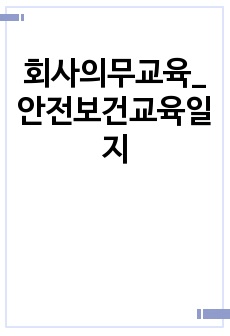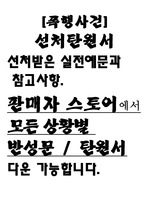Integration of Tradition and Modernity —Research on I. M. Pei's Design Principles in the New Suzhou Museum—
* 본 문서는 배포용으로 복사 및 편집이 불가합니다.
서지정보
ㆍ발행기관 : 동방문화대학원대학교 문화와예술콘텐츠연구소
ㆍ수록지정보 : 문화와예술연구 / 22권
ㆍ저자명 : MA RUIDONG
ㆍ저자명 : MA RUIDONG
목차
I. Introduction1. Suzhou Museum Project
2. I. M. Pei's Career
Ⅱ. I. M. Pei’s Architectural Aesthetics
1. Architectural Philosophy
2. Modernism and Traditionalism
3. Selected Works Analysis
Ⅲ. Design and Analysis
1. Chinese Traditional Elements
2. Modernist Integration
3. &quat;留白&quat; Concept and Symmetry
4. Materials, Colors, and Gardens
Ⅳ. Implications and Interpretations
1. Cultural Preservation and Innovation
2. Architectural Aesthetics
3. Cultural Communication
4. Lessons for Modern Architecture
Ⅴ. Conclusion
한국어 초록
본 논문은 베율명(贝律铭)의 건축 업적에 대한 광범위한 탐구를 수행하며, 특히 전통 중국 미학과 현대주의 디자인 원 칙을 통합하는 그의 숙련을 요약하는 쑤저우 박물관 신관에 중 점을 둔다. 베율명(贝律铭)의 작품에 대한 이 철저한 검토는 고대 전통과 현대 혁신을 결혼시키는 그의 디자인 철학의 복잡 성을 풀어낸다. "留白" 개념, 대칭, 재료, 색상 및 정원의 조화 로운 통합의 복잡한 적용으로 특징 지어진 쑤저우 박물관 신관 은 문화 유산이 건축 디자인에서 어떻게 보존되고 현대화 될 수 있는지에 대한 횃불로 서 있다. 본 논문은 또한 베율명(贝 律铭)의 작품 세계의 보다 광범위한 함의와 해석을 분석하며, 문화 보존과 건축 미학의 지속적인 진화에 대한 그것의 깊은 영향을 드러낸다. 본 논문은 문화 의사소통에 대한 그의 기여 에 대해 자세히 설명하고 현대 건축을 위한 통찰력있는 교훈을 제공하며, 역사적 맥락과 현대 해석 사이의 통합 가능성을 강 조한다. 베율명(贝律铭)의 독특한 시각을 통해 쑤저우 박물 관 신관을 탐험함으로써 본 논문은 건축이 문화의 반영이자 혁 신자가 될 수 있는 방법에 대한 우리의 이해를 더해준다. 본 논문은 세계 건축 분야를 계속해서 영감을 주고 형태를 만드는 건축 비전가로서 베율명(贝律铭)의 지속적인 유산을 확증함 으로써 결론을 내린다.영어 초록
This paper conducts an extensive exploration of the architectural achievements of I. M. Pei, with a particular emphasis on the New Suzhou Museum, a work that encapsulates his mastery in integrating traditional Chinese aesthetics with modernist design principles. This meticulous examination of Pei's work unravels the complexity of his design philosophy, which marries ancient traditions with contemporary innovations. The New Suzhou Museum, characterized by the intricate application of the "留白" concept, symmetry, and the harmonious integration of materials, colors, and gardens, stands as a beacon of how cultural heritage can be preserved and contemporized in architectural design. This paper also dissects the broader implications and interpretations of Pei's oeuvre, including its profound impact on cultural preservation and the ongoing evolution of architectural aesthetics. This paper delves into his contributions to the discourse on cultural communication and offers insightful lessons for modern architecture, underlining the potential for synthesis between historical context and modern interpretation. By exploring the New Suzhou Museum through Pei's unique lens, this paper enriches our understanding of how architecture can be both a reflection and an innovator of culture. This paper concludes by affirming Pei's enduring legacy as an architectural visionary, whose works continue to inspire and shape the field of architecture globally.참고 자료
없음태그
"문화와예술연구"의 다른 논문
 중국당대(中國當代)의 도자인(陶瓷印) 창작연구24페이지
중국당대(中國當代)의 도자인(陶瓷印) 창작연구24페이지 명(明) 만력(萬曆)년간의 화보(畫譜)와 원본(原本)의 심미적 차이점18페이지
명(明) 만력(萬曆)년간의 화보(畫譜)와 원본(原本)의 심미적 차이점18페이지 唐宋시기 顔眞卿의 영향력에 관한 연구 -『中正之筆』의 평론을 중심으로 -24페이지
唐宋시기 顔眞卿의 영향력에 관한 연구 -『中正之筆』의 평론을 중심으로 -24페이지 명(明)나라 려기(呂紀)의 화조화 구도 분석22페이지
명(明)나라 려기(呂紀)의 화조화 구도 분석22페이지 『개자원화전(芥子園畫傳)·매보(梅譜)』의 부호 표현 분석과 의의18페이지
『개자원화전(芥子園畫傳)·매보(梅譜)』의 부호 표현 분석과 의의18페이지 중국 대학교 음악 예술경영 전공의 교육 현황 연구22페이지
중국 대학교 음악 예술경영 전공의 교육 현황 연구22페이지 蕭雲從의 산수화 圖式에 관한 연구18페이지
蕭雲從의 산수화 圖式에 관한 연구18페이지 하소기(何绍基)의 미적 추구와 후세의 영향18페이지
하소기(何绍基)의 미적 추구와 후세의 영향18페이지 네팔 국가 정치가 시각 예술에 미치는 영향에 대한 연구26페이지
네팔 국가 정치가 시각 예술에 미치는 영향에 대한 연구26페이지 경로당 활성화 요인 연구 - 서울시 경로당프로그램 관리자 관점 심층분석 -20페이지
경로당 활성화 요인 연구 - 서울시 경로당프로그램 관리자 관점 심층분석 -20페이지


















